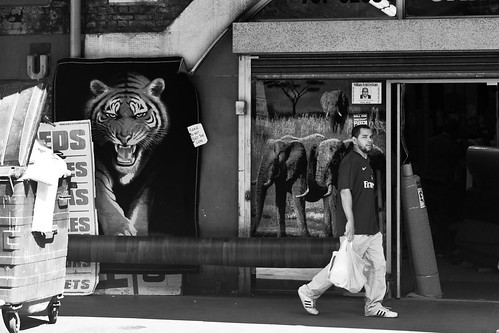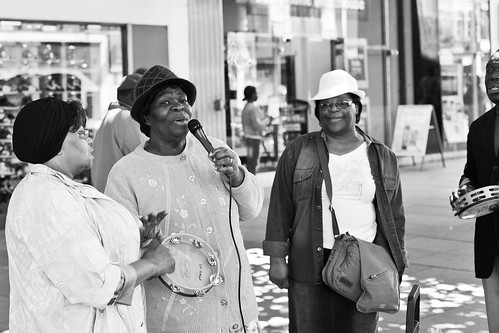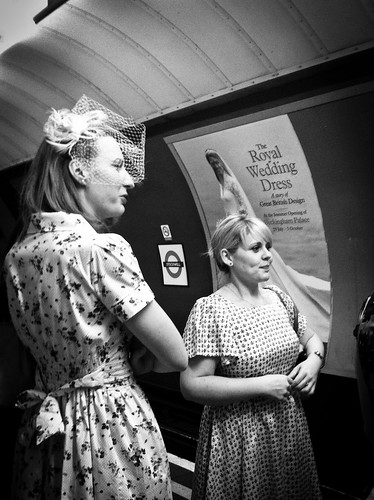Starting out with Street Photography - becoming fearless
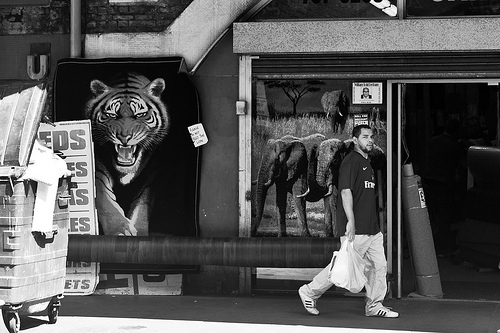
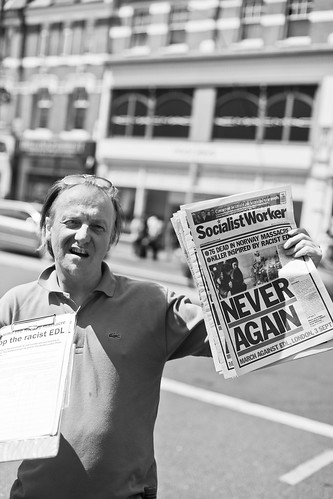
The title of this post is deliberately ambiguous, as I both wanted to add some tips based on my experiences, and also profess that I am new to this all, being mainly a landscape photographer, so it's a journey of discovery (Based on some text I wrote in 2011 on a now defunct posterous blog).

It all started last year when I found out my friend was performing in London during the afternoon, and I wanted to go and see the Vivian Meier street photography exhibition (well worth it) in the morning, so I decided to lug my SLR and iPhone up to Brixton to take some pictures. Being a landscape photographer I realised I there was a lot to learn about street photography, so I set to work reading up as much as I could on the bus on the way up to London.
After looking at Vivian's pictures of Chicago, I emerged out onto the street energised and inspired, and was determined to take a few pictures in the hour I had before I had to make my way to the theatre.
The marvels of daily life are exciting; no movie director can arrange the unexpected that you find in the street. – Robert Doisneau
Settings
After a bit of googling, it turns out my good friend Haje has already been doing some street photography, and his results were excellent.
If I wasn't on my iPhone, I would have looked more at the settings he used, and given them more thought. Use a narrow aperture of you want to get everything in the scene in, and a wide aperture if you want to isolate your subjects.
I'm a big fan of wide apertures with lots of bokeh, but I think the next time I go out I might well try some shots with a slightly deeper depth of field, maybe with some manual settings (I was shooting primarily in AV mode).
I pretty much shot wide open in AV mode, but with some hindsight as the sun was so bright what I should have done was underexpose shots by a stop or two and maybe considered shooting in manual mode.
A quick search on Google gave me some interesting discussions on what settings to use - a common technique (which I didn't but should have used) was set my ISO to 400, and preset my focal distance to about 10 feet or go for the hyperfocal distance:
Street photographers traditionally will set the lens at its hyperfocal distance. This distance depends on the lens focal length and the aperture but the basic idea is that it is the closest distance setting for which subjects at infinity are still acceptably sharp.
With fast film and a sunny day, you will probably be able to expose at f/16.
With a 35mm lens focussed to, say, 9 feet, subjects between 4.5 feet and infinity will be acceptably sharp (where "acceptable" means "if the person viewing the final photograph doesn't stick his eyes right up against it"). (from photo.net)
The benefit that static settings give you is that you can work super quickly - look for pictures constantly, and when you see one, lift the camera up and press the button - no fiddling with settings needed. If you can shoot Raw that's even better, as you have more latitude for processing.
Approach
Having watched the three stunning videos on street photography which make up 'Documenting the Human Condition' by the ridiculously talented Chris Weeks (ignore the fact that they could be a leica advert - they are beautifully shot and both informative and fascinating, and there's lots you can take away from it using any camera), one thing I noticed was the willingness to really be open and confident about what you are doing. All the photographers he covered weren't standing at the end of the street with a long lens, sniping away (which IMO is very wrong).
In 'Documenting the Human Condition' the street photographers were walking around and intermingling with life on the street, holding their cameras in clear view, purposefully looking for interesting situations and patterns, and smoothly taking shots. As they say, it's easier to ask for permission than forgiveness, and as long as you are reasonably sensitive about not invading anyone's personal space, and as long as you are relaxed and not acting like you shouldn't be taking pictures, people generally will be a little curious, but not too bothered.
The thing I found hard is that acting like the photographers were in the previously mentioned videos is hard, and you need balls of steel in terms of confidence. Part of me wishes that my camera was a little smaller, as people were eyeing it up suspiciously as it was a large SLR.
Eric Kim (a talented street photographer and avid blogger) also has some good tips on not looking like a creep and becoming fearless.
There's nothing more likely to put people's shackles up than a photographer that is looking shifty and taking shots quickly from a distance. By acting in a calm, quick, purposeful and confident manner, I found that people didn't have a chance to put their 'photo face' on, and if they really had an issue with you taking their picture, they really let you know, at which point if they asked me to delete pics I happily obliged. I found snapping away confidently and they following it up with direct eye contact and a little smile worked wonders.
There is a lot of confusion in the media with people's rights to shoot on the street, but for the most part it is fine on public property. You can find out more on your right to shoot in the street here.
I'm only starting out with street photography, and still have lots to learn, but find the whole process really challenging, slightly scary and yet very exciting, and look forward to doing more. Give it a go - get out there and challenge yourself.
More inspiration?
For more inspiration after writing this post I found the following blogs to be very inspiring:
- http://streetreverbmagazine.com - dedicated to promoting, publishing and discussing contemporary street photography
- http://www.sevensevennine.com/?p=2506 - Nick Turpin on Street Photography
- http://severinkoller.at/blog/ - amazing use of shade and light.
- http://erickimphotography.com/blog/ - huge resource of tips and articles.
